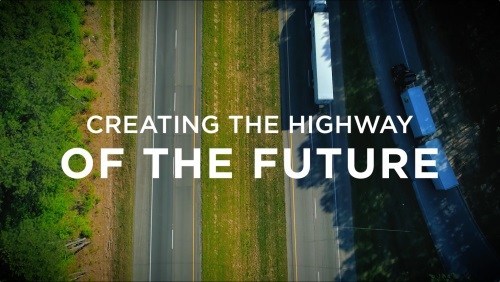Imagine a highway that uses technology to track motor vehicles along an18-mile span ― that uses existing vehicle infrastructure to transmit radio data, as well as rest areas with testing zones and solar-powered charging stations.
Incorporating those features and others are part of the approach of the Georgia Department of Transportation long the said stretch of Interstate 85 via The Ray, which runs along the Ray C. Anderson Memorial Highway – so named for the late LaGrange, Georgia, native and businessman who promoted sustainability as a key aspect of future transportation projects.
The Ray – a high tech arterial roadway that lies south of Atlanta’s Hartsfield-Jackson Airport – begins at the Georgia/Alabama state line and ends in LaGrange at Exit 18. It’s a “future-forward infrastructure” project made possible by what’s known as a P4 – a public-private-philanthropic partnership.

What the state “has done with its partners in the advanced technology sector is learn from an 18-mile living laboratory that’s completely open to the public,” said Allie Kelly, executive director of The Ray. “It’s not a test track at a university, but a real-world environment that’s used by the 11.5 million drivers.”
The idea behind The Ray noted Kelly, “is to make highway transportation safer. Russell [McMurry, Georgia DOT commissioner] and I always talk about roughly 38,000 Americans who die in traffic crashes every year. They’re why we’ve worked together on various innovations” to make highway travel safer.
One way to accomplish that goal, she explained, is to make testing easily accessible. And free.
“In 2016, we installed a drive-thru tire safety test station at Mile Marker 1 at a Federal Highway Administration rest area along The Ray’s northbound lane,” Kelly pointed out, highlighting the use of WheelRight technology at a tire safety station, which allows drivers to cruise over testing equipment “at 10 miles per hour or less”
She added that the technology evaluates tire pressure, tire tread depth, temperature, weight in motion and looks for damage on your tire sidewalls before printing out a report, all in about 10 seconds. “And it works on every vehicle type – aside from motorcycles,” Kelly noted.
She also noted that the Georgia DOT has built a dozen projects along The Ray since 2015, including the aforementioned connected vehicle infrastructure for radio data, which Kelly called “the biggest data pipeline the U.S. has ever seen, where we will have 105 million connected cars by 2022 sending out data packets at a rate of 10 times per second.”
The roadway also features a solar-powered electric vehicle charging station; a solar road called Wattways; and a megawatt solar array at the Exit 14 Diamond interchange, 40 feet from the pavement.

Georgia DOT’s McMurray said such innovations are the result of “a case-by-case cost-sharing concept, with The Ray as a frequent financial partner,” in addition to private industry donating materials.
He said other states are taking notice of Georgia’s approach.
“While Georgia is definitely leading the way in innovative partnerships like Georgia DOT’s partnership with The Ray, one example I can cite is the Massachusetts Department of Transportation Solar Energy Program,” McMurry noted. “[It] focuses on ground mount solar [photovoltaic] generation facilities within state highway layouts throughout Massachusetts. The goal is to create energy savings by procuring electricity at a favorable rate, generate revenue by using unused state land and support the Commonwealth’s green and clean economy.”
There are various facets to what is being accomplished via The Ray that include not only data collection and energy creation, but environmental aspects, too – such as the evaluation of different types of plants-pollinators and native species. For instance, the solar farm covers a natural habitat with native grasses and flowers, among others.
From environmental and safety standpoints, “all of the shredded tires on an interstate from blowouts and are very dangerous and they are often the byproduct of loss of life,” Kelly said. “While this effort is about safety, we’re also wasting two billion gallons of fuel every year because we can’t get our tire’s air pressure right.”
On that note, she added that “the big winners” traveling The Ray are fleets. “School buses, city transit buses and 18-wheelers coming out of ports can use every weigh station on I-85,” Kelly pointed out. “That’s how we correct those tire issues that are leading to tire failure, wasted, fuel, and dangerous crashes.”
While made with sadness and frustration, Kelly emphasized there is hope in that observation, as well.
“The technology we need to make improvements exists,” she stressed. “We just need to start using it.”

